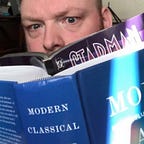Quantum computers could probe the boundary between classical and quantum physics
The boundary between classical and quantum physics has remained ‘fuzzy’ for a century. New research implies that quantum computers could allow this boundary to be seen clearly for the first time.
A new quantum computing algorithm that offers a clearer understanding of the quantum-to-classical transition, has been developed by researchers at Los Alamos National Laboratory.
The algorithm could provide a method to model systems on the cusp of quantum and classical worlds — such as biological proteins — in the process answering questions about how quantum mechanics applies to large-scale objects.
Patrick Coles of the Physics of Condensed Matter and Complex Systems group at Los Alamos National Laboratory, says: “The quantum-to-classical transition occurs when you add more and more particles to a quantum system, such that the weird quantum effects go away and the system starts to behave more classically.
“For these systems, it’s essentially impossible to use a classical computer to study the quantum-to-classical transition.”
